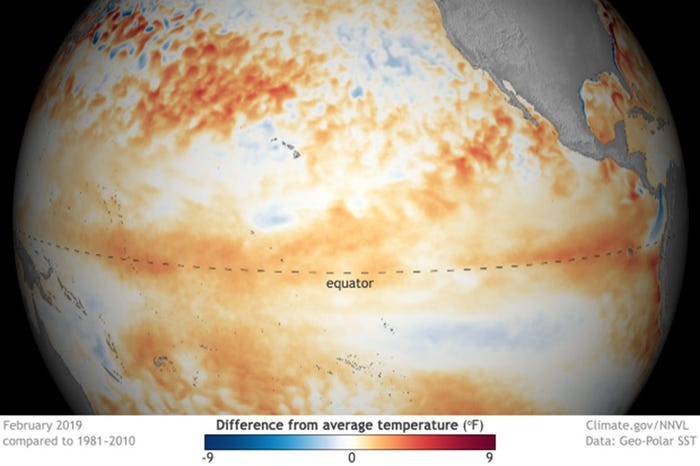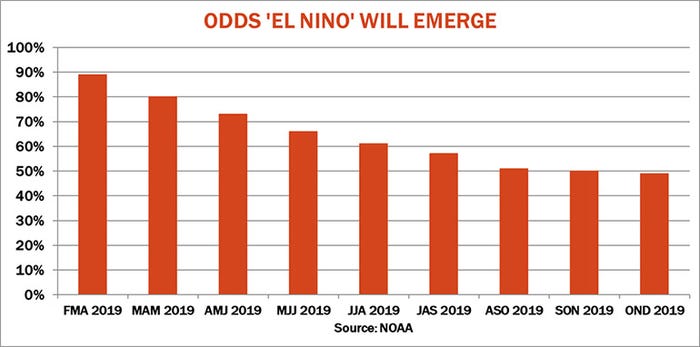
The latest El Niño advisory from NOAA, out March 14, indicates there is a strong likelihood those conditions will last through the spring and also predicts a better-than-average chance it will extend through the summer months.
“The current event bears some similarities to the 2015 spring El Niño that went on to become a strong event by winter,” NOAA forecasters note in their summary. “However, it's too soon to tell whether this event will follow the same path.”
Currently, NOAA predicts an 80% chance that weak El Niño conditions will prevail in the Northern Hemisphere through this spring, with a 60% chance it will continue through the summer.

That trend could prove positive, but for now, U.S. farmers and ranchers may have plenty of other weather-related challenges to contend with rolling into this planting season. The country just wrapped up the wettest winter on record after barely surpassing 1997-18’s precipitation totals. Just 22% of the U.S. is experiencing any level of drought – the lowest since July 2017 – but excessive moisture in recent weeks has led to flooding in some key production areas, particularly in parts of the upper Midwest.
NOAA is also predicting wetter-than-average weather between April and June for much of the country, according to the agency’s latest three-month outlook.
But moving forward, the continued presence of El Niño could dish out bullish results for U.S. grain production, according to Farm Futures senior grain market analyst Bryce Knorr.
“El Niño conditions in the summer and fall are associated with above-normal corn and soybean yields in the U.S., though the warming of the equatorial Pacific could trim wheat production here,” he says.
Current ENSO trends do not bode well for Australian wheat production, Knorr says.
“The latest update raises the threat level for another bad wheat crop in Australia, where El Niño devastated yields this year,” he says. “Forecasters down under said hot conditions could continue for another three months there, just as farmers try to seed another wheat crop.”
All things considered, however, El Niño is just one of many weather phenomena that can impact crop yields around the globe, Knorr adds.

“It’s important to remember that the correlations between this weather event and yields, though statistically significant, is relatively small,” he says. “Weather is complicated, especially as it relates to crops grown over large regions like the U.S.”
For a more thorough examination of how El Niño can affect crop production across the world, dig into this Deep Dive podcast from Farm Futures.
About the Author(s)
You May Also Like






